- remind me tomorrow
- remind me next week
- never remind me
The X Button
Horror Head
by Todd Ciolek,

We simply can't get enough reasons to fret about Sony's The Last Guardian, the oft-delayed PlayStation 3 game from Ico and Shadow of the Colossus director Fumito Ueda. First Ueda left Sony, after which we were assured that his contract would keep him on until he finished the game. Then E3 came and went without Sony showing The Last Guardian, after which we were assured that the game was still in development. Last week, there came the news that Sony let the trademark to The Last Guardian expire, after which we were assured that that game is still in development, honest.

This brings us to Sony's conference at Gamescom this week. The company had a lot to show, including Media Molecule's innovative Vita game Tearaway, the PS Move horror title Until Dawn, and the announcement of PSone games coming to the Vita very soon. Yet they didn't show The Last Guardian, and that says something despite all of the reassurances.
NEWS
NYU MEDIA'S SECOND WAVE HAS SHOOTERS, DUNGEONS, MORE FOREST FAIRIES
Nyu Media isn't the first North American company to bring over games from Japan's underground “doujin” scene, but they can boast the biggest catalog. And it's getting larger with the second round of Nyu's PC-based titles: ALLTYNEX Second, RefleX, Kamui, Croixleur, and Eryi's Action.
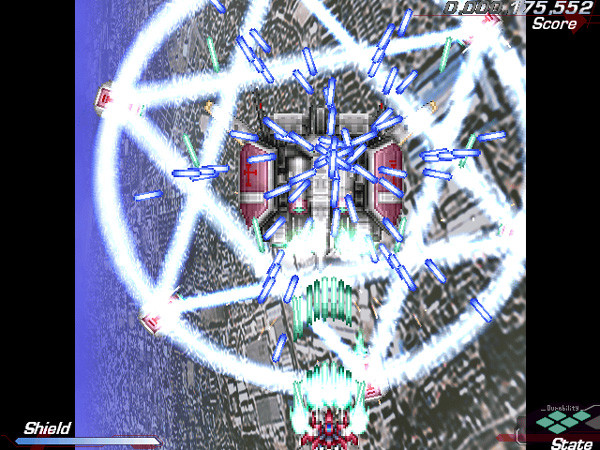
ALLTYNEX Second, RefleX, and Kamui are all part of developer Siter Skain's Tale of Alltynex shooter series, which actually started back on the little-seen FM Towns system in 1997. ALLTYNEX Second, a semi-remake of the original Alltynex, lets players switch between their ship's jet-like and mecha-like forms, with accompanying attacks for each. RefleX features a ship-covering shield as its primary mechanic, reflecting some enemy shots and absorbing others. Kamui takes a page or two from Taito's RayStorm franchise, as its main fighter uses targeting lasers to attack foes on a lower plane. The three games make for an intriguing view of doujin shooter design, strung together by an increasingly convoluted story of humans at war with computers, aliens, and themselves.
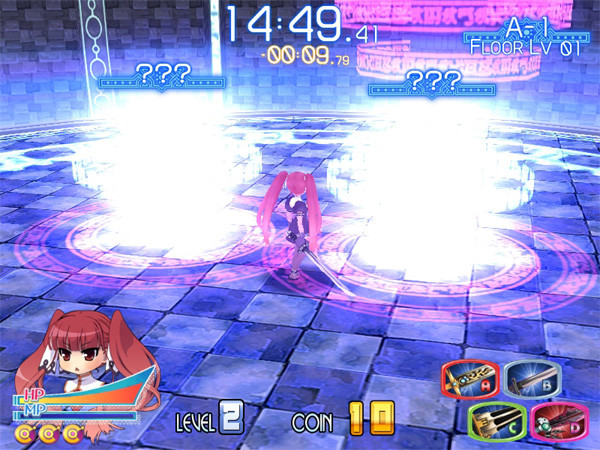
Croixleur's title appears to be a pun, as the game's a dungeon crawler heavy on combat. The work of Souvenir Circle, it finds a warrior named Lucrezia Visconti fighting through one level of monsters after another, with her rival Francesca Stororo occasionally dropping in. The game's less about intricate stage architecture and more about the fruits of battle. Lucrezia gains money and new weapons throughout her quest, and she's rewarded for pulling off chain attacks and other special moves.
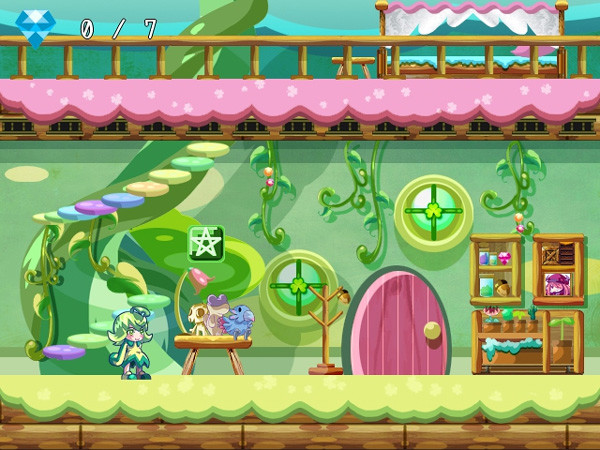
Developed by Xtal Sword, Eryi's Action is a side-scroller with a cute surface and brutal intent. The titular Eryi is a forest sprite who skips merrily through various side-scrolling levels of whimsical beasts and colorful backdrops, and most of them can kill her with the slightest touch. Eryi's only method of defense is grabbing the various objects she finds, from bombs to helicopters, and using them to avoid or take out her foes. The game's not nearly as innocent as it first looks, judging by the devious layouts of the stages (or by the art on the developer's website). Its ideas are very much in the style of Super Mario Bros.: The Lost Levels, I Wanna Be the Guy, or those nasty Flash platformers that everyone seemed to make five years ago.
Eryi's Action also brings to mind the last game in Nyu Media's first wave: a side-scrolling, martial-arts action game that initially went by the working title of Fighting Fairy. It's now called Fairy Bloom Freesia, keeping it closer to its original Japanese title. It's due out shortly, but there's no specific date just yet.
REMEMBER ME IS CAPCOM'S NEW, SOMEWHAT DISTURBING ACTION GAME
Capcom's favored established franchises of late, so it's a pleasant turn to announce Remember Me, an original PlayStation 3/Xbox 360 game from Dontnod Entertainment. Its world is some downcast, tyrannically run cyberpunk future, and this doesn't sit properly with Nilin, a memory hunter who specializes in cybernetically raiding the minds of others. This is shown to unsettling effect in the game's first play footage. Nilin wanders a few streets, scales a building, and then hacks a government leader's memories to make him think that he killed his girlfriend. The goal? Making him commit suicide.
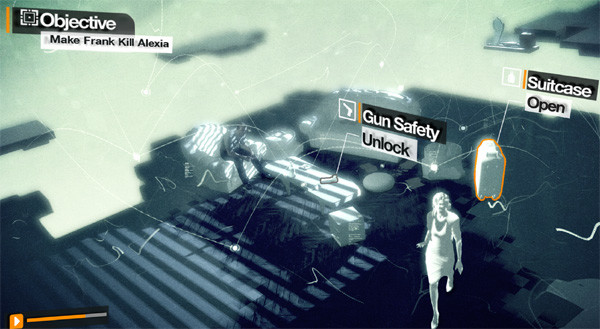
Remember Me's strung together with familiar sights. Nilin's attacks and maneuvering recall Assassin's Creed, her mental games suggest Ghost Trick's item manipulation, and the idea of Inception's altered memories hangs above it all. It's an intriguing concept all the same, and the palindrome-inclined Dontnod builds a rather pretty future Paris for Nilin to explore. The underlying gameplay also raises some troubling points: is Nilin even worse than a conventional murderer when she's twisting someone's mind toward suicide? Perhaps the game thinks so; its main story kicks off when Nilin's own memories are wiped and she's on the run.
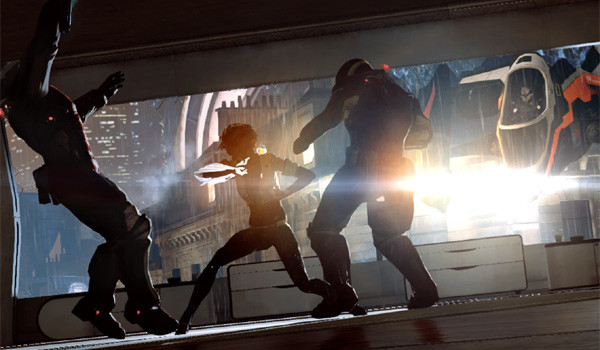
On the other hand, the dialogue leads to some banal exchanges, and the game's cover already plays it dumb. Capcom could've pushed Remember Me's cyberpunk stage or its questions about the nature of memory. So what goes on the box?

Oh. Nilin's rear. Should've known.
NEW NEO GEO HANDHELD NOW MORE LIKE OLD, NON-HANDHELD NEO GEO
Some of you will remember the Neo Geo X, an iPhone-shaped portable system designed to play games from SNK's titanic 1990s Neo Geo console. In March, it seemed for all the world like a prototype idea, but the thing just re-emerged with a $199.99 price tag and plans for a worldwide launch on December 6. Yes, really.
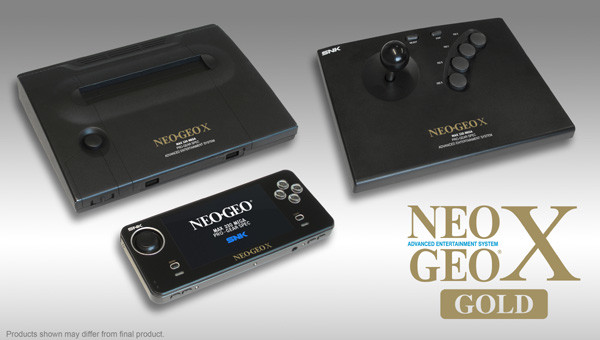
The system's no longer just a portable game console patterned after the Neo Geo Pocket Color. Your $200 now gets you the handheld as well as a joystick and a charging base with HD outputs. This will let you hook up the system to a larger screen, and it all imitates the Neo Geo legacy. The base is styled just like a Neo Geo console, and the joystick looks the same as the one you got if you picked up a $600 Neo Geo back in the 1990s. In fact, they look a little too exact in the promotional shots, as though we're still viewing mock-ups.
The list of included games also improved slightly. The original announcement promised 20 built-in Neo Geo titles that mostly covered the console's early years, and the lineup still features Alpha Mission II, Cyber-Lip, Fatal Fury, Fatal Fury Special, Last Resort, League Bowling, King of the Monsters, Magician Lord, Mutation Nation, Nam-1975, Metal Slug, and Super Sidekicks. However, some wise soul decided to replace antiquated older games with their improved sequels. So you'll get The King of Fighters '95, Baseball Stars II, Art of Fighting II, the beloved Samurai Shodown II, and World Heroes Perfect instead of their predecessors. The lineup's now less sports-heavy, as Top Players Golf, Football Frenzy, and Ultimate 11 are all gone. They're replaced by 3 Count Bout, Real Bout: Fatal Fury Special, and Puzzled. Other games can be loaded through the system's card slot, and SNK surely plans to sell the rest of the Neo Geo's catalog, from Super Baseball 2020 to Samurai Shodown V.
The package deal makes the Neo Geo X Gold a touch more enticing, and the system will be distributed by Tommo, Inc. in North America. Naturally, many questions remain. Will people really shell out $200 to experience decades-old Neo Geo offerings in a modern simulacrum? Will the craftsmanship of the console meet the standards of notoriously picky Neo Geo fans? And will SNK dig up rarities like Ironclad or the unreleased Karate Ninja Shou for the Neo Geo X Gold?
HALF OF GUILD 01 TRADEMARKED IN THE U.S.
It's recklessly optimistic to expect all of Level-5's Guild01 to come to North America. The four-game omnibus features a luggage-handling airport simulator from Seaman creator Yoot Saito and a weapon-shop game from comedian Yoshiyuki Hirai. Those are tough sells even in Japan, where Guild01 didn't do so well.
Yet Level-5 apparently has hopes for the other two games in the package. Goichi “Suda 51” Suda's Liberation Girl is a futuristic anime-styled shooter in which Japan's teenage president pilots a mecha to avenger her dad's death. Crimson Shroud is a fantasy RPG in the style of traditional tabletop titles, and it's the first game in years from Yasumi Matsuno (Final Fantasy XII, the Ogre Battle series). According to Siliconera, both games were trademarked in the U.S., suggesting some domestic release. Perhaps they'll be separate downloadable games, or perhaps Guild01 will be half the size for North America. I'd be happy either way.
INTERVIEW: RESIDENT EVIL 6'S HIROYUKI KOBAYASHI AND YOSHIAKI HIRABAYASHI
Resident Evil 6 has a lot of history to build on, and it shows. The game picks and chooses characters and ideas from the past few Resident Evils: Leon Kennedy and Helena Harper battle a zombie infestation, while Chris Redfield and his squad tread through enemy fire and crowded, monster-filled neighborhoods. Then there's Jake Muller, son of longtime series villain Albert Wesker. Accompanied by Resident Evil 2's Sherry Birkin, Jake brings a new hybrid of gameplay to the table. Resident Evil 6 is equally ambitious in its settings, ranging from North American college towns to the streets of the Hong Kong stand-in Lanshiang and the fictional Eastern European nation of Edonia.
How's all of this coming together? To find that out, we went to Resident Evil 6 executive producer Hiroyuki Kobayashi and producer Yoshiaki Hirabayashi. A veteran Capcom developer, Kobayashi's been with the company since the first Resident Evil, and he most recently finished up the fantasy-action game Dragon's Dogma. Hirabayashi's worked on the series since the Resident Evil GameCube remake, and he oversaw the story and cinematics for Resident Evil 5.
You've said in past interviews that you want to “add more action” to Resident Evil 6. How do you plan to do that, and how will it be different from Resident Evil 4 or 5?
Kobayashi: In Resident Evil 4 and 5, you couldn't move and shoot. That was a big sticking point for a lot of people. You can move and shoot in Resident Evil 6, so that's one way we're increasing the action. Also, we've tweaked the fighting style a lot, so there's more that you can do.
Hirabayashi: A lot of people have asked, “If you're adding to the action, aren't you detracting from the horror?” To that I would say we're really improving the way enemies behave in this game. They're more active than re-active, because they're just not going to wait for you to shoot them. Even if you're on your back, they're going to try and jump on you, and you can roll and get away from them. So we've put effort into fully realizing the gameplay. It's not just that you have more to do, the enemies also do more.
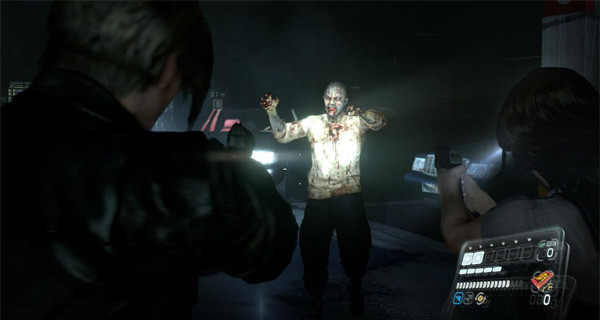
You also mentioned that Resident Evil 6 would have horror elements that Resident Evil 5 lacked. What sort of horror elements are these?
Kobayashi: We have the three campaigns, with Leon, Chris, and Jake. We want to offer different elements of horror. Horror's not a monolithic thing. With Leon, the focus is really on the classic Resident Evil horror. With Chris, he's still with the BSAA, but he's with a group this time, and you'll see members of his team falling to attrition as he fights creatures, and that's a pretty horrific thing to experience. With Jake, it's something completely different. We have this creature, Ustanak, relentlessly pursuing him, and that in itself is its own kind of horror.
Hirabayashi: To go back to the action, you have the classic zombies shambling forward [stands up and inches along, moaning like a zombie], and that's just not scary. In Resident Evil 5, you had to either stop and shoot or run, so now that you can move and shoot, the enemies come up to you and try to grab you. That's how we want to connect the horror elements with the action in the game.
Kobayashi: And in order to have good horror, you have to have a good story. So we made sure that there's a story that connects these characters and makes you identify with them. All of the characters' stories are intertwined in some way, so you really feel that connection and get an emotional response. We really tried to make sure that the level is up to something you'd seen in a movie or TV drama.
Is it true that the game will have four hours of cutscenes?
Hirabayashi: There was an article that said that, but it was based off a rating description. If you talk about all of the different death scenes, then sure, it might have four hours. But in terms of traditional cutscenes, it's just about two hours. And there are parts of the gameplay that are very cinematic, so if you add those it'll expand the game's cutscenes.
How did you decide on where to set the game?
Kobayashi: With this game, we wanted to go somewhere we haven't been before. And the director [Eiichiro Sasaki] wanted to set part of this game in China. Personally, I wanted to add a bit more color variation, and I think that by bringing the game to China we did that.

How will Edonia be different from the European setting in Resident Evil 4? What countries inspired it?
Kobayashi: We didn't really model it after a specific country. We just wanted to give it an Eastern European flavor. So it's more like what Americans or Japanese people who haven't been to Eastern Europe would imagine Eastern Europe to look like.
Hirabayashi: What we're trying to do is draw out the essence of Eastern Europe without pointing to any specific country.
Each segment of the story seems to have different themes. Leon's resembles a 24-style political thriller, while Jake and Sherry's arc seems to carry the idea of children struggling with the crimes of their parents. Will their stories be separate for most of the game, or will they cross over throughout it?
Kobayashi: All of the stories stand on their own. With Jake, you can play from start to finish, and that's Jake's story. With Leon and Helena, you get the story with the president, where the bioterrorist attack causes him to become a zombie. With Chris you have his complete story. But if you just play one of them, there'll be some unanswered questions. So we encourage people to play all the campaigns. You're free to choose between them at any point.
Has Dragon's Dogma influenced Resident Evil 6? Will we be able to jump on large monsters or toss smaller ones around like the characters do in Dragon's Dogma?
Kobayashi: Not really, since they were under development around the same time. There are some overlaps, some things that appear in both, but that's just Capcom's in-house style. There will be some giant boss fights in Resident Evil 6, but the way you fight them is a progression from the way you fought bosses in Resident Evil 4 and 5.

Chris and Leon have headlined the past two Resident Evil games, and now they're in the sixth. Do you think you'd ever do a major Resident Evil with all new characters?
Kobayashi: Well, the team really put a lot of effort into Jake's design and creation, and they're proud of that. We'll see how people react to him in this game, and if the response is good enough, that may influence the course of Resident Evil 7.
How did you come up with Jake? He seems to be the first major antihero for the series.
Kobayashi: For Resident Evil 6, we had the classic characters of Leon and Chris, and the fans know who they are. But we wanted to get new people playing this game, so we thought we'd put in a new character for new fans. We decided to make him a relatively young guy, and once we had that nailed down, we thought “Well, how do you incorporate him into this story and make him part of the Resident Evil world?” That was the flow of Jake's creation.
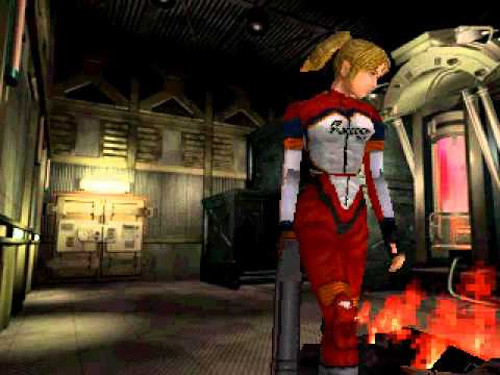
You worked on both Resident Evil 2 and Resident Evil 4, two games that had interesting development cycles. Resident Evil 2 began as a slightly different game that fans now call Resident Evil 1.5, and Resident Evil 4 originally had a more gothic atmosphere, with Leon fighting living suits of armor. What was it like to change the games mid-development?
Kobayashi: In Resident Evil 2's case, the first Resident Evil was a surprise hit, so we wanted to immediately follow it up with a sequel. But we didn't really put much time into it, we and rushed it out. We were under a lot of pressure to mimic that success. So we took a step back and said “Let's make this fun, let's do this right.” So we had to scrap the original plan for Resident Evil 2.
Hirabayashi: With Resident Evil 4, we wanted to showcase some new type of horror, so we didn't put a limit on it. That's what Kobayashi and [Shinji] Mikami were looking for: no limits. We thought “let's throw out a bunch of ideas for gameplay and horror and see what we get.” Then we tried to winnow out the bad ideas, and at the end we were left with something we thought was pretty good. And that's the video you've seen of the Resident Evil 4 that never existed, with the suit of armor. But after we put that out, we decided “This isn't the best we can do.” So we went back to the drawing board and that's where we got the ideas for the released version of Resident Evil 4. There are several different preview versions of Resident Evil 4 out there, and there are some that people have never even seen.
Most of the characters in Resident Evil 1.5 carried over to the final Resident Evil 2, but one of the game's leads, a college student named Elza Walker, was replaced by Claire Redfield. Did Elza simply become Claire, or might we see Elza Walker revived in future Resident Evils?
Kobayashi: We'll probably never see her because, yes, she became Claire.
NEXT WEEK'S RELEASES
JOJO'S BIZARRE ADVENTURE HD VER. Developer: Capcom
Developer: Capcom Publisher: Capcom Platform: PlayStation Network/Xbox Live MSRP: $19.99 Jojo's Bizarre Adventure puzzled a few North American fighting-game fans back in 1999. We knew about Dragon Ball Z and perhaps Fist of the North Star, but what on earth was this Jojo's Venture thing that Capcom was making? Thirteen years later, Hirohiko Araki's manga series and its anime extraction are available in the West, and we're all a little wiser. It's also the manga's 25th anniversary, and that's all the reason Capcom needs to haul out their Jojo's fighter for a high-definition release. The game looks a lot smoother (which isn't necessarily good if you like the rougher edges of sprite art), and there's an online mode that allows eight-player meetups and a matching service. Other than that, this is the same fighter that mystified some of us over a decade ago. That's a good thing, because Jojo's Bizarre Adventure is a well-honed creation from Capcom's busiest fighting-game period. Originally made for the same arcade array that powered Street Fighter III, the Capcom version of Jojo's is a testament to the company's 2-D abilities. The characters aren't as large or as detailed as Street Fighter III's, but that's to leave more screen space for the ridiculous attacks hurled by the characters and their monstrous spiritual alter-egos called Stands. With each character's Stand embracing a different ability or stat boost, the game's quite diverse in its play styles. The same goes for its visual angle, since the characters range from standard hero Jotaro Kujo to a falcon named Pet Shop. On that subject, Capcom tweaked some of the names for the English version back in 1999, possibly due to legal matters stemming from Araki's love of pop-music references. So Mariah's named Mahrahia, Vanilla Ice is now Iced, and so on. But they're all faithful to the look and atmosphere of Araki's manga, and avid followers of Street Fighter may note a few resemblances among the Jojo's cast. Perhaps this was Capcom's way of thanking Araki for the inspiration. |
LEGASISTA Developer: System Prisma
Developer: System Prisma Publisher: NIS America Platform: PlayStation Network MSRP: TBA Legasista isn't quite ClaDun 3, but it shares a lot with System Prisma's deliberately retrogressive dungeon hack. It has the same sort of labyrinthine environments, the same extensive character customization, and the same primitive visual design that openly panders to aficionados of old-fashioned sprite graphics. Its storyline sets up an imposing edifice called the Cursed Ivory Tower, and every floor of it is fraught with traps and vicious enemies. it all plays much like an action-RPG, one where players control one lead character and two supporting party members at any given time. As they uncover treasure and destroy foes, they'll find various items that can be eaten and thrown to alter the playing field. Legasista covers the prerequisite of randomly generated dungeons. Beneath the tower lie “ran-geons” 100 floors deep, and they hold various gateways that rearrange things even more drastically. Legasista also aims for a bit more character detail than the standard dungeon dive's story. The Tower's newest explorer is one Alto Straiter, who's hunting for a spell that'll turn his cursed, crystalline sister back to normal. His first traveling companion is Melize, a sentient weapon from ancient times, and she vacillates between a coldly robotic demeanor and absent-minded girlishness. The playable cast expands with a mechanically inclined witch, her customized golem, an agile explorer, and a boisterous half-dragon girl. By equipping various Energy Frames, they cover the usual RPG abilities: thieves disarm traps and find extra loot, mages use gear to exploit three different spellbooks, and warriors…well, they do what warriors usually do. If the characters aren't to your liking, you're free to make some new ones with the game's party-member editor (another ClaDun remnant). It also allows characters to be built pixel by pixel, and their abilities can be customized as well as their inconsequential background blurbs. Hey, sometimes meaningless details add the most to a game. |
NEW SUPER MARIO BROS. 2 Developer: Nintendo
Developer: Nintendo Publisher: Nintendo Platform: Nintendo 3DS MSRP: $39.99 The original Super Mario Bros. 3 features a level wherein Mario enters a block-bordered room, stomps a P-switch, and turns everything around him into coins. Similar smorgasbords appeared in later Mario games, but New Super Mario Bros. 2 seizes the whole idea of coin collecting and tosses it to the heights of self-mockery. As Mario and Luigi scamper through the game's side-scrolling levels, shiny coins are everywhere. They spray out of pipes, they rain from above, and they appear out of thin air at the drop of a proverbial plumber's hat. Mario even assumes Midas-like levels of avarice, as certain power-ups give him golden fireballs or let him spout coins from his shining form. A mid-air gold ring even turns enemies into gold-plated fonts of glittery Mario money. The game's additional Coin Rush mode sends Mario on three-level forays and turns his point totals into cash. It's all part of the game's secondary aimi: collect a million coins. Of course, there's a still a Mario title beneath this unadulterated capitalism. During yet another quest to rescue Princess Peach, Mario acquires most of the abilities he enjoyed in the first New Super Mario Bros., including the Mini-Mario and Mega-Mario transformations. Shell Mario is sadly absent, though Nintendo revived the flying Raccoon Mario for this game, and the Invincibility Leaf is once again chucked at players who perish five times in the same level. The game also lacks the four-player mode of New Super Mario Bros. Wii, as it's just a two-player game with Mario and Luigi. That way the youngest generation of Mario players can learn to hoard wealth among a chosen few. |
discuss this in the forum (19 posts) |
this article has been modified since it was originally posted; see change history